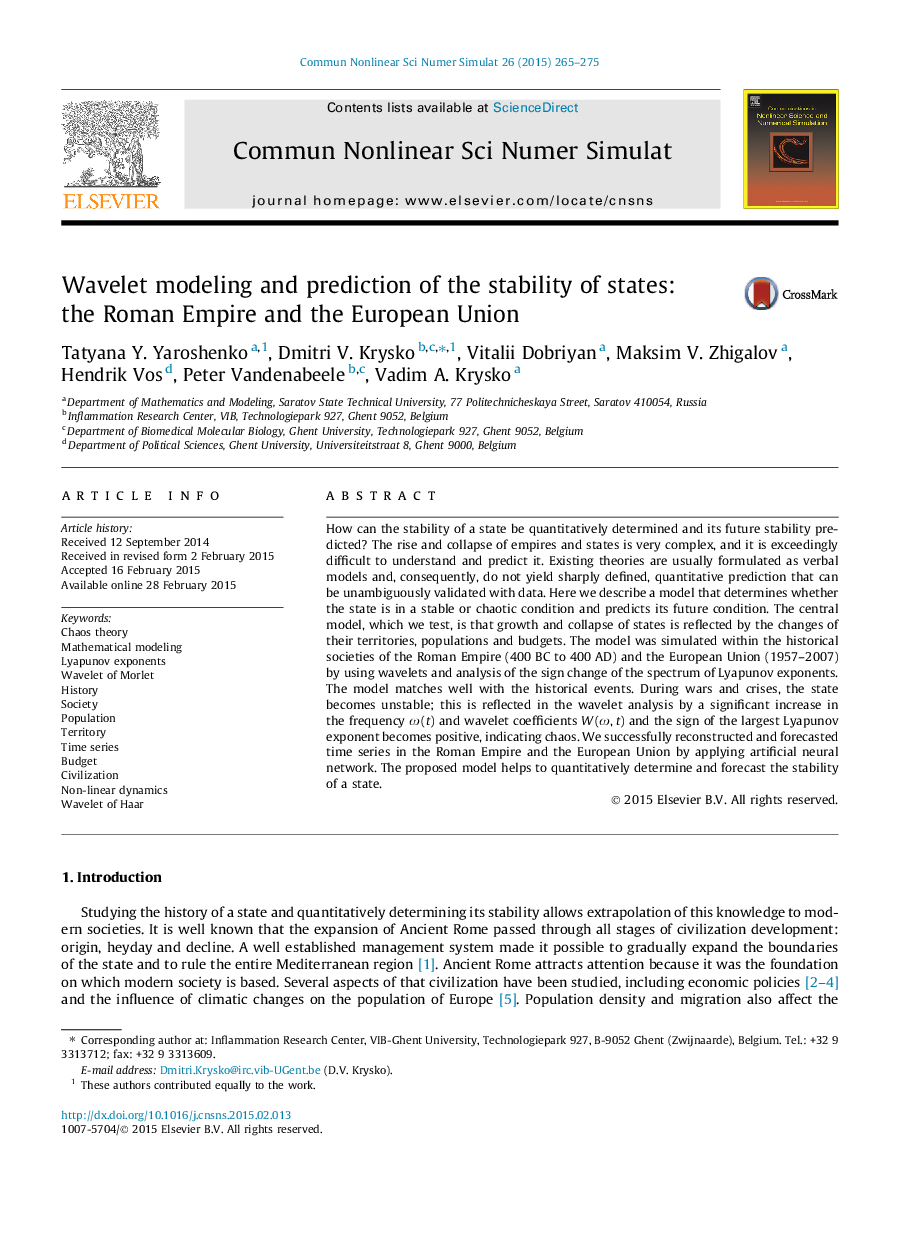| Article ID | Journal | Published Year | Pages | File Type |
|---|---|---|---|---|
| 7155464 | Communications in Nonlinear Science and Numerical Simulation | 2015 | 11 Pages |
Abstract
How can the stability of a state be quantitatively determined and its future stability predicted? The rise and collapse of empires and states is very complex, and it is exceedingly difficult to understand and predict it. Existing theories are usually formulated as verbal models and, consequently, do not yield sharply defined, quantitative prediction that can be unambiguously validated with data. Here we describe a model that determines whether the state is in a stable or chaotic condition and predicts its future condition. The central model, which we test, is that growth and collapse of states is reflected by the changes of their territories, populations and budgets. The model was simulated within the historical societies of the Roman Empire (400 BC to 400 AD) and the European Union (1957-2007) by using wavelets and analysis of the sign change of the spectrum of Lyapunov exponents. The model matches well with the historical events. During wars and crises, the state becomes unstable; this is reflected in the wavelet analysis by a significant increase in the frequency Ï (t) and wavelet coefficients W (Ï, t) and the sign of the largest Lyapunov exponent becomes positive, indicating chaos. We successfully reconstructed and forecasted time series in the Roman Empire and the European Union by applying artificial neural network. The proposed model helps to quantitatively determine and forecast the stability of a state.
Related Topics
Physical Sciences and Engineering
Engineering
Mechanical Engineering
Authors
Tatyana Y. Yaroshenko, Dmitri V. Krysko, Vitalii Dobriyan, Maksim V. Zhigalov, Hendrik Vos, Peter Vandenabeele, Vadim A. Krysko,
